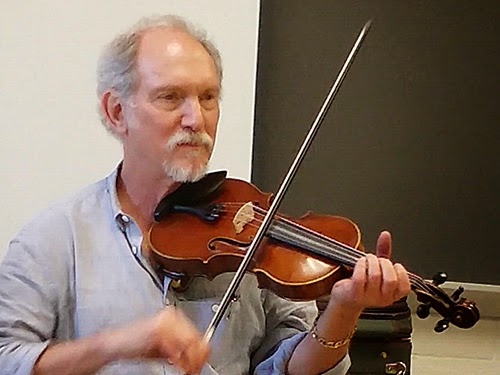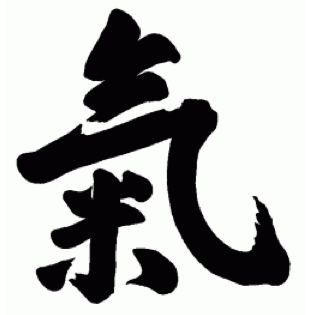Another Post About Music and Aikido
In a recent seminar with the fiddle master Bruce Molsky, I became very interested in watching the way his body was engaged in playing the music. It was a kind of connected disconnection that reminded me of something we strive for in aikido practice. I remarked to a friend that Bruce's fingers, hands and arms seemed disconnected from his body, because they seemed to move independently of whatever the rest of his body was doing. My friend argued that his entire body was connected, because what the rest of his body was doing was reacting and emphasizing the music.
This is something that most, if not all, accomplished musicians do: when the playing has become familiar and comfortable enough, it almost happens by itself, and the rest of your body - and consciousness - is available: to emphasize, anticipate, engage, and even dance and sing.
In aikido practice we can see this in the most advanced practitioners. Certainly watching Sensei offers a powerful visual image of how this connected disconnection can work. While Sensei is throwing a very strong person, his feet may delicately step forward or back, and he can easily talk or even sing (Scarborough Fair is a favorite...). Only part of his body is involved in the underlying throw, and the rest of his body, and consciousness, is available: to emphasize, anticipate, engage, and even dance and sing.
Why is this helpful? When I am having difficulty finding a visual metaphor with how I want to feel in my aikido practice, I can simply call to mind the experience of watching my favorite musicians.
This is something that most, if not all, accomplished musicians do: when the playing has become familiar and comfortable enough, it almost happens by itself, and the rest of your body - and consciousness - is available: to emphasize, anticipate, engage, and even dance and sing.
In aikido practice we can see this in the most advanced practitioners. Certainly watching Sensei offers a powerful visual image of how this connected disconnection can work. While Sensei is throwing a very strong person, his feet may delicately step forward or back, and he can easily talk or even sing (Scarborough Fair is a favorite...). Only part of his body is involved in the underlying throw, and the rest of his body, and consciousness, is available: to emphasize, anticipate, engage, and even dance and sing.
Why is this helpful? When I am having difficulty finding a visual metaphor with how I want to feel in my aikido practice, I can simply call to mind the experience of watching my favorite musicians.




Comments
Post a Comment